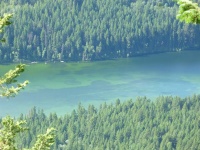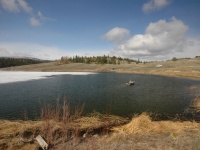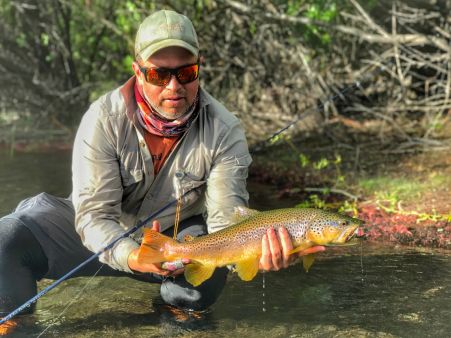The Western North America states and provinces are home to literally tens of thousands of superb trout lakes. Many of these waters are rich in nutrients which allow them to support an abundant and diverse aquatic invertebrate food base. Quality or trophy stillwater trout fisheries can be found throughout western North America. Sustaining a quality fishery means balancing the population of fish in relationship to abundance of food.
To many anglers, lakes appear as black holes as there are no current seams, defined channels or structured flow to identify where the fish are living. Deciding where and how to fish lakes is really no different that the approach to fishing moving waters.
The trout have to seek out their food sources as there is no current to bring food to them. This means fishing relatively shallow water between a few feet to 25 feet in depth as this is the depth range that the majority of invertebrates such as midges or chironomids, mayflies, damselflies, dragonflies, caddisflies, scuds and leeches as well as forage fish are living.
This prime real estate is known as the shoal or littoral area and is defined as that depth zone that sunlight energy can penetrate to the bottom and allow photosynthesis to occur. This results in aquatic green plant growth which forms the basic habitat for most of the major trout foods. Concentrate your fishing effort on the shoal or along the edges of the shoal as it drops off to the deep water zone of the lake.
As with rivers and streams, understanding the life cycles, emergence timing and preferred habitat of the key aquatic insects, other invertebrates and forage fish that trout eat will determine where and how to fish a lake. Essential fly lines for stillwater success include floating, intermediate or hover and a couple of faster sinking lines such as a type 4 and type 7. These lines will allow you to imitate all the important trout food sources at any time of the year.

















